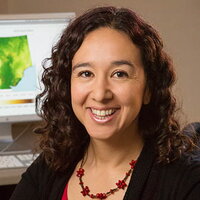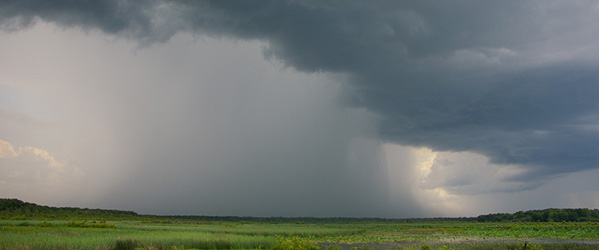
Precipitation and Hydrometeorological Processes

The earth’s water cycle is an integral part of the climate system. Water vapor takes many pathways through the water cycle, from entering the atmosphere from the oceans and land surface, being transported across vast distances while interacting with global and regional atmospheric circulations, forming and interacting with clouds and the weather systems that they are contained within, and returning to the surface as precipitation. The pathways by which water enters and leaves the atmosphere, despite its complexity, plays a key role in determining the earth’s radiation balance. Observations suggest that the representation of cloud and precipitation processes and surface-atmosphere exchanges of water are poorly represented on weather and climate models. The hydrometeorologist is interdisciplinary and bridges the important gap between climate, weather, and hydrology to improve our understanding of how societally important phenomena such as floods and droughts impact our society and ecosystems.
Students in the department confront the grand research challenge to improve the understanding of precipitation and hydrometeorological processes so we can improve the prediction of weather and climate. They participate in field campaigns across the globe to collect measurements of precipitation using advanced techniques, not just rain gauges. These techniques include remote sensing retrievals from advanced dual-polarization radars and microwave radiometers, and retrievals from aircraft microphysics probes and disdrometers that measure particle size distributions to understand the physics of precipitation. We also use aircraft and surface observations to understand the flows of water from the surface into the atmospheric circulation, including in situ measurements of soil moisture, streamflow, ecosystem characteristics and physics, and fluxes of energy and water at the surface. Satellite data and atmospheric reanalysis also plays a key role in understanding the flows of water vapor through the earth system as well as cloud and precipitation processes, but these must be validated using observations we collect as well as detailed process-oriented model studies. Students in this area also gain experience using state-of-the-art modeling systems to evaluate the representation of water-cloud-precipitation-hydrologic processes in weather systems and the climate system.
Faculty working in Precipitation and Hydrometeorological Processes





Related News
- DEC 6, 2022 BY LOIS YOKSOULIAN | PHYSICAL SCIENCES EDITOR An almost limitless supply of fresh water exists in the form of water vapor above Earth’s oceans,...
- (Argonne National Laboratory and College of LAS, 9/8/2022) The U.S. Department of Energy (DOE) has awarded DOE’s Argonne National Laboratory and a team of academic and community leaders—including...
- In a study recently published in the journal Atmosphere, ATMS graduate student Lina Rivelli-Zea leveraged disdrometer data collection in the Americas to compare the drop-size...





